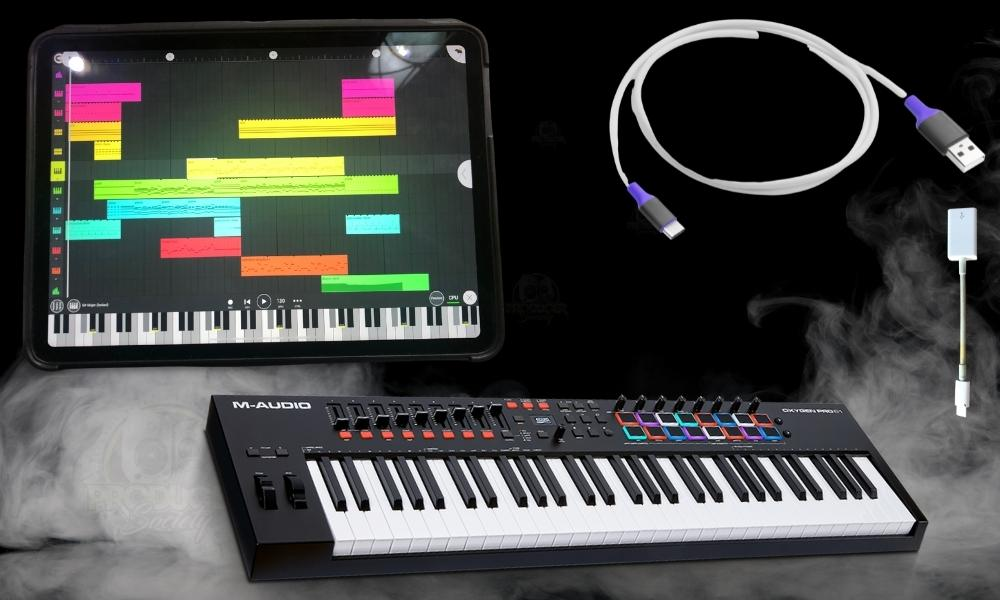
Learning to play the piano or create music digitally can be overwhelming with so many options. A common question among beginners is whether to start with a keyboard piano or a synthesizer.
This guide explains the key differences, helping you choose the instrument that suits your learning style, budget, and musical goals. We'll also cover keyboard synthesizers for beginners, including models like the Smart Keyboard.
A keyboard piano is essentially a portable piano. Key features include:
Best for: Beginners focused on learning piano technique and reading sheet music.
A synthesizer generates sound electronically, often with more flexibility than a traditional piano. Key aspects:
Best for: Learners interested in electronic music, sound design, and production.
External reference: Synthesizer – Wikipedia
|
Feature |
Keyboard Piano |
Synthesizer |
|
Sound |
Acoustic-style piano sounds |
Electronic, programmable sounds |
|
Keys |
Weighted or semi-weighted |
Usually synth-action, lighter |
|
Learning curve |
Beginner-friendly |
Slightly steeper for sound design |
|
Purpose |
Piano practice, performance |
Music production, electronic music |
|
Connectivity |
Headphones, USB, Bluetooth |
MIDI, USB, DAWs |

A keyboard synthesizer combines features of both instruments:
Tip: A smart keyboard like PopuPiano can act as both a piano and a basic synthesizer with apps and MIDI integration.
When choosing between a keyboard piano and synthesizer, consider:
|
Model |
Keys |
Features |
Price Range |
|
PopuPiano Smart Keyboard |
61 |
Light-up keys, app integration |
$250–$350 |
|
Casio LK-S250 |
61 |
Lighted keys, Step-Up lesson system |
$200–$300 |
|
Yamaha PSS-F30 |
37 |
Mini keys, built-in songs |
$100–$150 |
Tip: Look for models with learning apps or lighted keys, which accelerate early progress.
|
Model |
Keys |
Features |
Price Range |
|
Korg Minilogue XD |
37 |
Analog sounds, sequencer |
$500–$600 |
|
Novation Bass Station II |
25 |
Synth-focused sounds, MIDI |
$400–$500 |
|
Arturia MicroFreak |
37 |
Hybrid digital/analog, touch keyboard |
$350–$450 |
Tip: Start small; beginners often benefit from compact synths before moving to professional models.
Ask yourself these questions:
Tip: Some smart keyboards can connect to apps or DAWs, allowing you to explore synth features without buying a separate synthesizer.

Modern smart keyboards and synthesizers often support apps that make learning easier:
Tip: Beginners benefit from interactive tools that provide real-time feedback.
When choosing your first instrument, consider where you’ll practice:
Tip: If you have limited space, a 61-key smart keyboard is usually sufficient for beginners.
One advantage of synthesizers over keyboard pianos is sound variety:
Tip: Explore different tones to keep practice fun, but focus on piano basics first.
Consider what you want to do with your instrument beyond learning:
External reference: MIDI Recording Basics – Sound on Sound
Your budget can influence which option is best:
Tip: Investing in a versatile smart keyboard can save money while giving you both piano and synth experience.
Can I learn piano on a synthesizer?
Yes, but the lack of weighted keys may limit finger strength development. Beginners often start with a smart keyboard or piano.
Is a keyboard synthesizer good for classical music?
It can be used, but weighted keys and piano-focused sounds are better for classical repertoire.
Do synthesizers help with music production?
Absolutely. Synths are designed for creating, shaping, and sequencing electronic sounds in a DAW.
How many keys do beginners need?
A 61-key smart keyboard is enough to start learning scales, chords, and simple songs.
Can a smart keyboard act as a MIDI controller?
Yes, many smart keyboards can connect via USB or Bluetooth to DAWs, giving basic MIDI control.
For beginners, a keyboard piano is ideal if your goal is learning piano fundamentals, while a synthesizer suits those focused on electronic music production. A keyboard synthesizer, like the PopuPiano Smart Keyboard, offers a flexible solution for learners who want both worlds.
Read more

Smart Keyboard vs MIDI Controller for Learners
Learning music today involves choices between traditional keyboards, smart keyboards, and MIDI controllers. Understanding the differences between a smart keyboard vs MIDI controller is crucial for ...

How to Connect a Smart Keyboard to Android/iPhone via Bluetooth MIDI
Learning to play piano has never been more interactive, thanks to Bluetooth MIDI technology. Whether you’re using an Android or iPhone, connecting a smart keyboard like the PopuPiano Smart Keyboard...